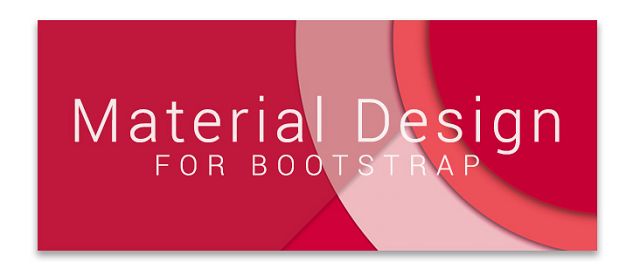Google releases a Bootstrap for Material Design.
The possibilities offered by Google's material design is unending. Material design is a final product of Google's effort to enhance user experience and overall dynamics of web layouts. Material design is a blend of dynamic promoted by flat designs and the real interface elements upheld by the quantum paper.
It incorporates a lot of designing aspects ranging from shadows, layout fixing, texture, and additionally as physics. To broaden the span of material design to more developers, Google has launched a decent number of assets including color pallets, multiple instances and illustrator files. Every one of these components added to the development of material designs in general.

In a video released by Google, the material design has been highlighted as a platform for creating "designing interfaces ". Material designs will serve developer as a language for creating fantastic web layouts. It serves as a platform for making applications.
Alongside the popularity of material design, a great number of companies and developers started providing related CSS frameworks to back Google's material design. Material design for Bootstrap, and Materialize. CSS are great in some cases. In any case, these CSS frameworks accompanied a lot of setbacks. Here huge numbers of the Bootstrap designers started posing the question, what is preventing Google from releasing a Bootstrap for the material design?
Bootstrap is a standout amongst the most looked for after projects in GitHub. It is implied for the making of websites that are essentially responsive. The excellence of Bootstrap framework is that developers continue updating the codes, and being an open source any expert developer can make simple contributions. The community is completely developed, and it is as yet rising. Along these lines, it is gainful for Google to launch a Bootstrap or an all-around helped CSS framework for the material design.
Benefits Google gain by launching a CSS Framework for Material Design?
By launching a CSS framework for the material design, Google can show a mobile-first attitude. The responsive sites will be built with their own codes. The open source nature will likewise web development companies or experts to add to it. It will Google to make all the more publicly consumed websites.
If Google proceeds with the initiative of making a CSS framework for material design, it will restrict numerous amateur companies or designers from making "stuffs" that needs transfer speed, and quality. Google's infrastructure is so substantial to wipe off the minor difficulties that may come in the method for developing a Bootstrap for the material design.
Conclusion
Google will most presumably concoct a Bootstrap for the material design. There are solid theories that demonstrate Google developers are working hard on this perspective. Companies and specialists taking a shot at Bootstrap web development are tensely sitting tight for the dispatch of Google's own CSS framework for the Material design.


